Abstract
1. The effects of an acute sustained increase in pulmonary venous pressure induced by partial obstruction of the mitral valve on the activity of the four types of pulmonary receptors, namely, slowly adapting, rapidly adapting, pulmonary C-fibre and bronchial C-fibre receptors, were studied in the dog. 2. Fifteen slowly adapting receptors, eleven rapidly adapting receptors and nine bronchial C-fibre receptors showed significant sustained increases in activity when stimulated by the elevated left atrial pressure by 9.4 +/- 0.2 mmHg for 15 min. Nine pulmonary C-fibre receptors did not show a significant increase (six of these nine receptors increased their activity in response to the stimulus). 3. When the left atrial pressure was increased in graded steps of 5 mmHg for 5 min each up to 15 mmHg, a significant graded response was found in all of seven slowly adapting receptors, five rapidly adapting receptors and five bronchial C-fibre receptors. The five pulmonary C-fibre receptors examined also showed increases, but the changes were not statistically significant. 4. In response to stimulation by the elevated left atrial pressure, increases in activity occurred within 1 min of application of the stimulus in all the receptors and returned to control levels within 1 min of removal of this stimulus. 5. It is concluded that in the dog, pulmonary vagal receptors are influenced by small increases in pulmonary venous pressure induced by partial obstruction of the mitral valve. The changes appeared to be greatest in the case of rapidly adapting receptors. The physiological significance of these responses remains to be investigated.
Full text
PDF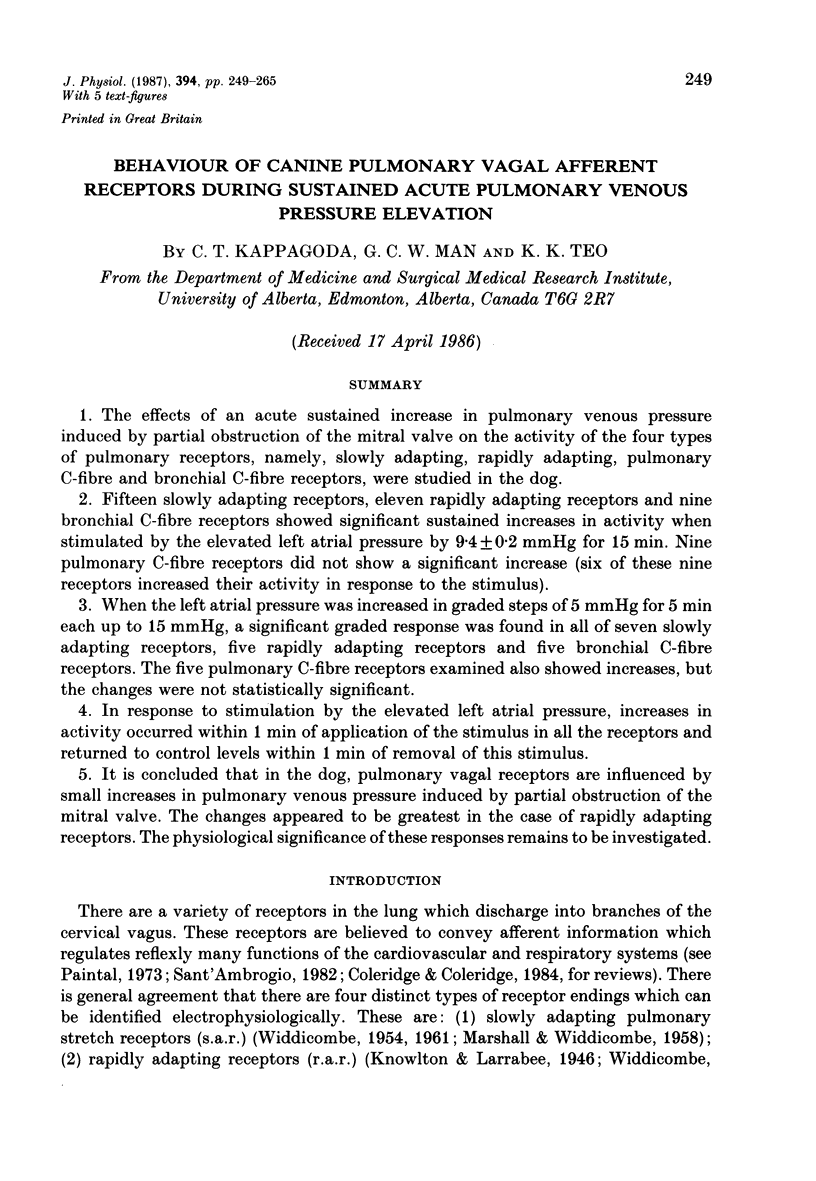
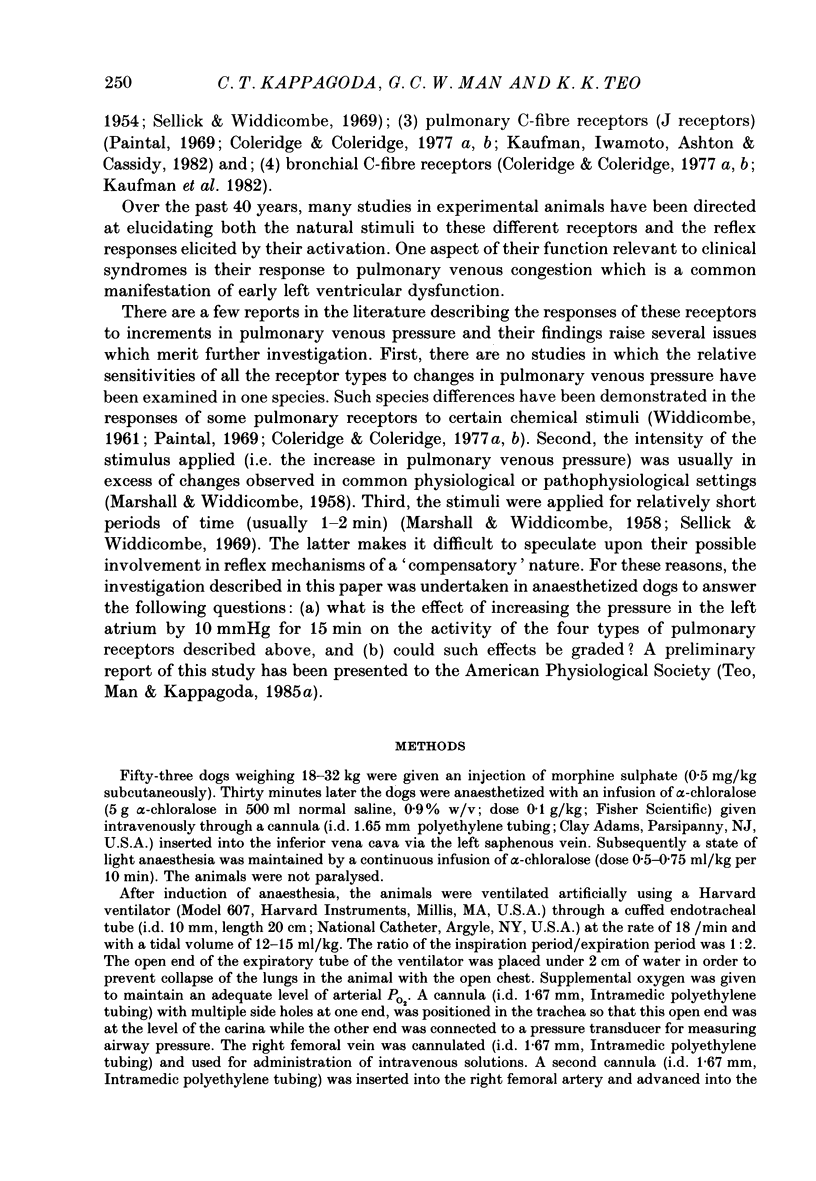
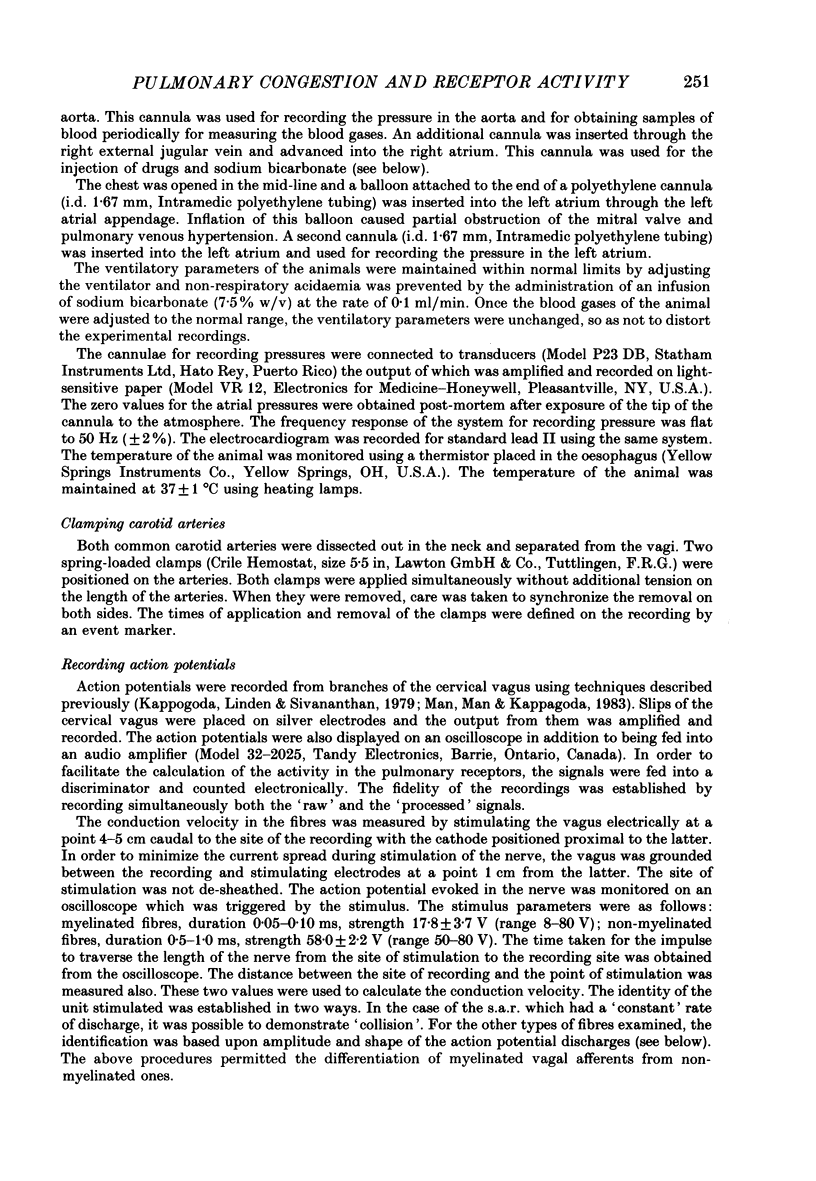
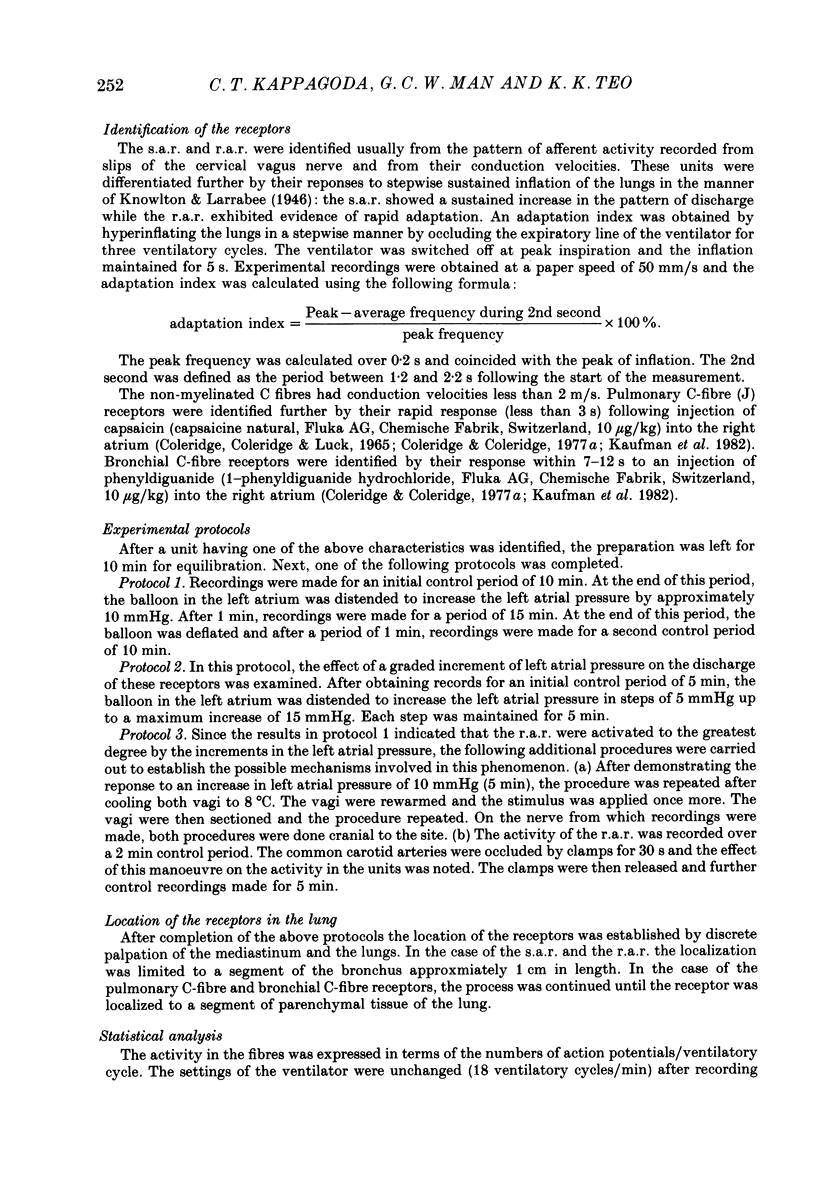
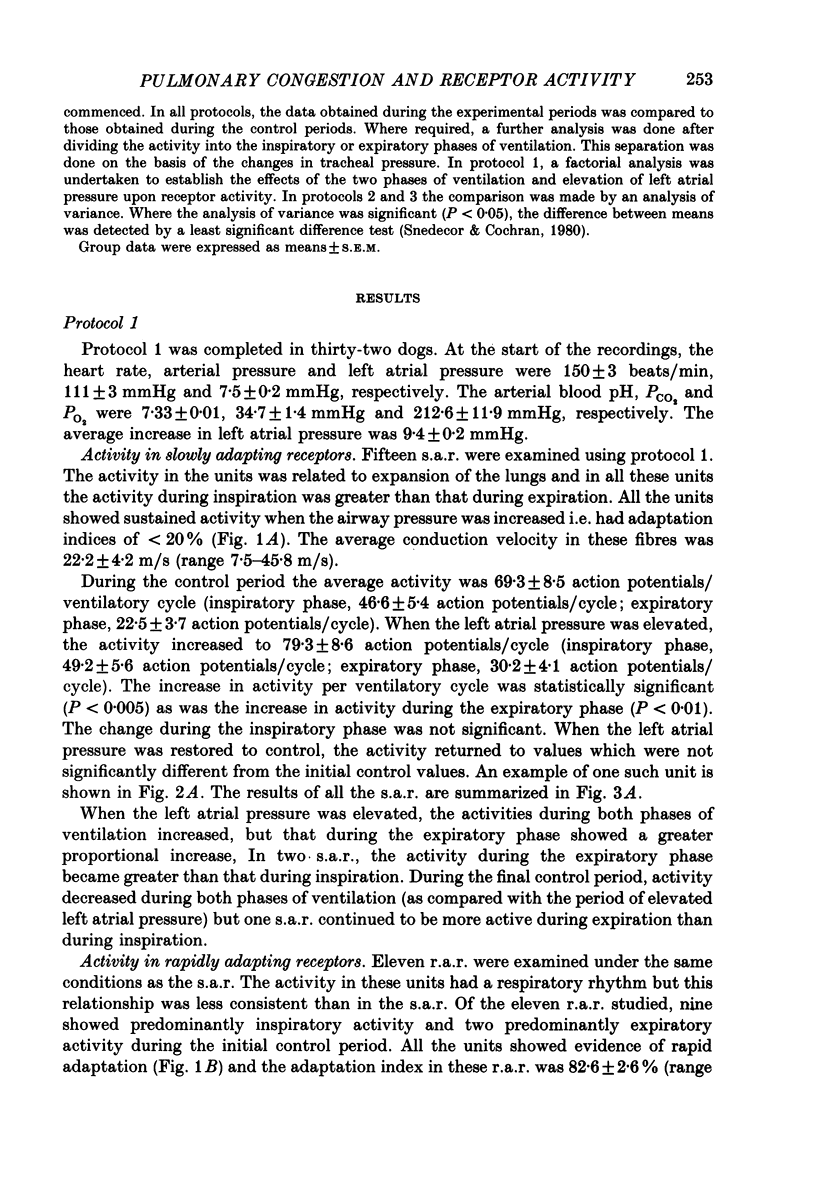
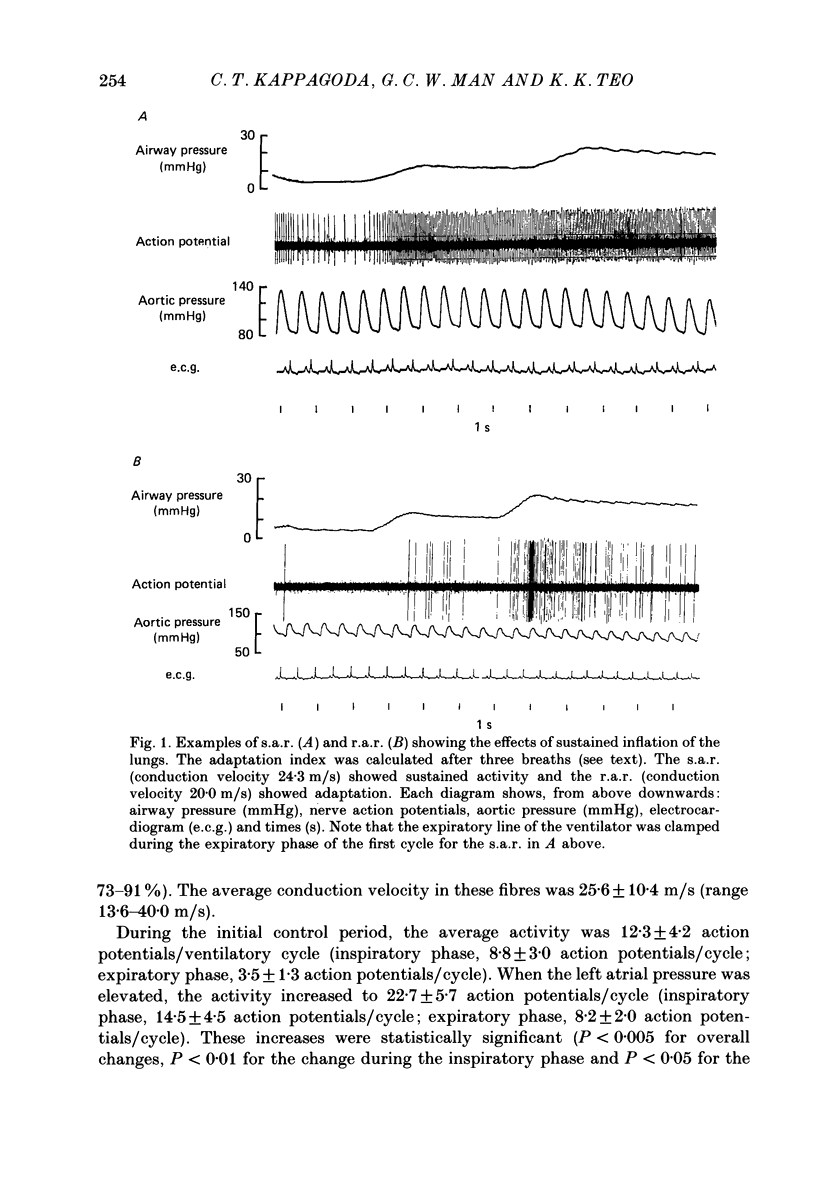
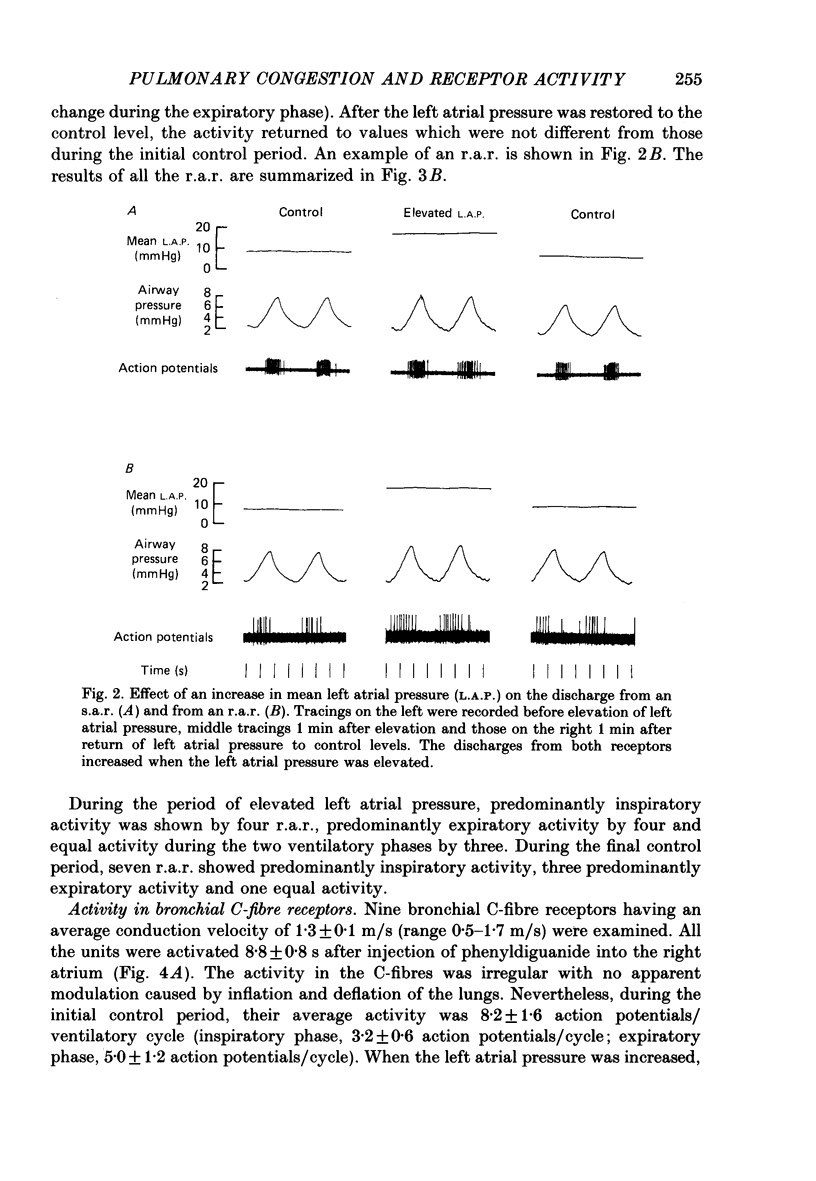
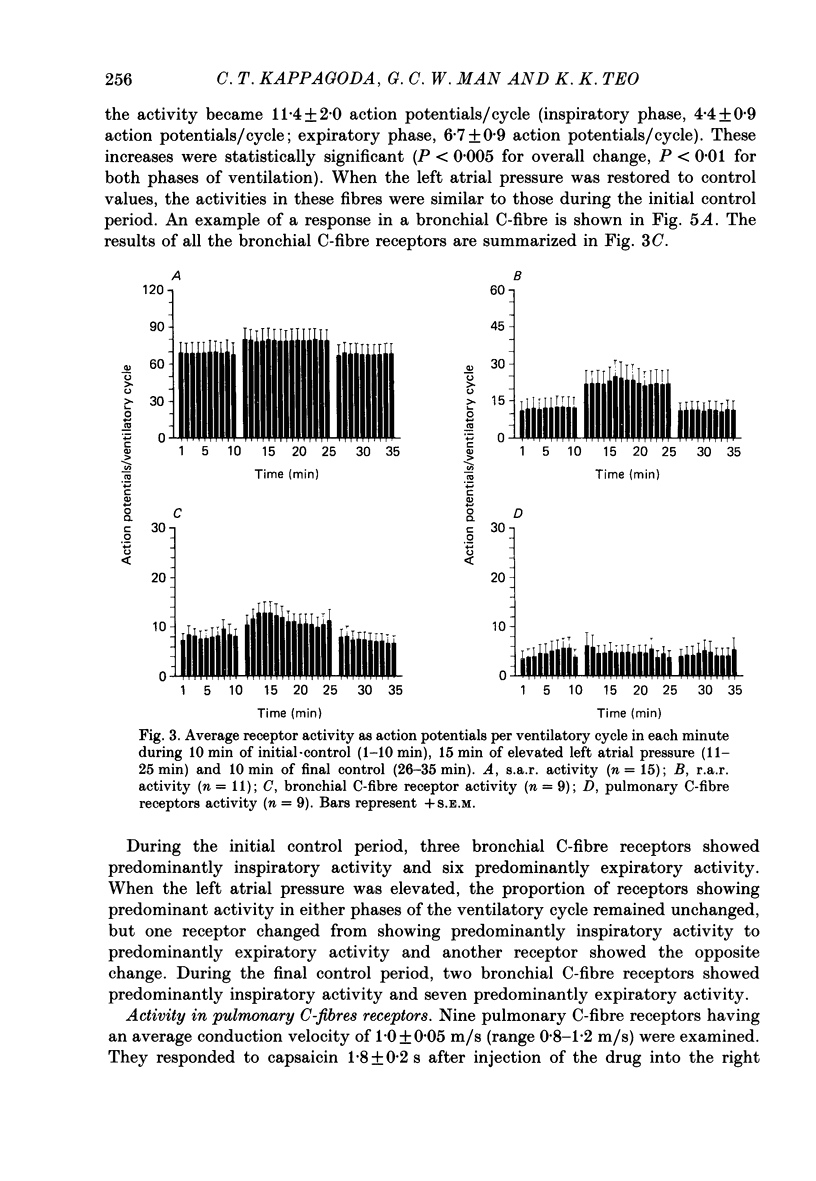

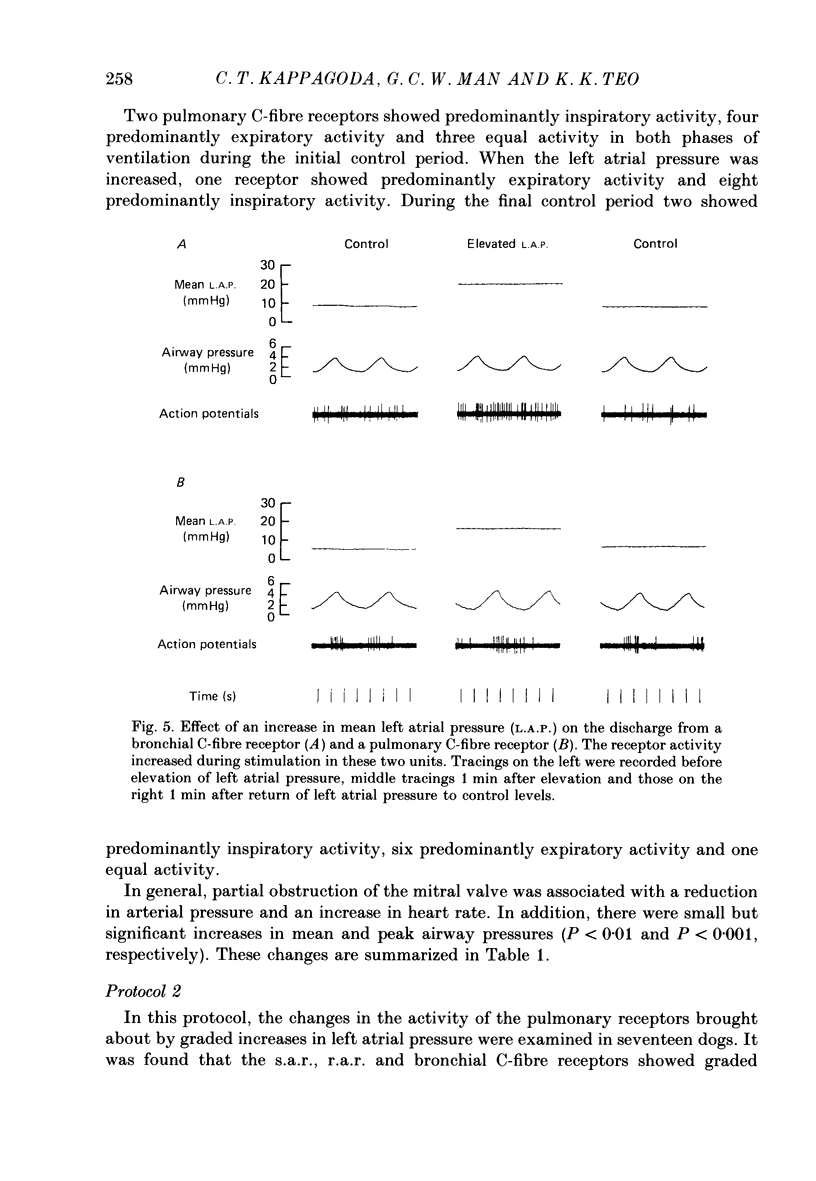
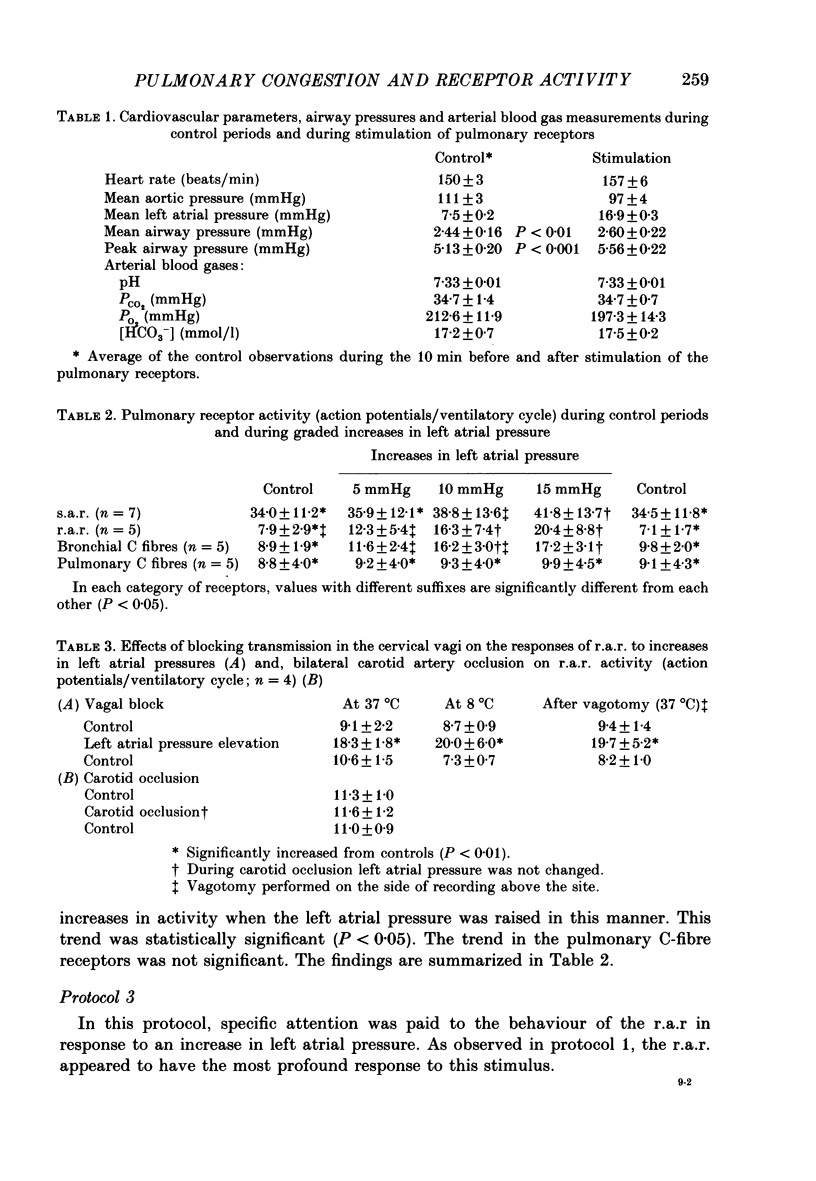
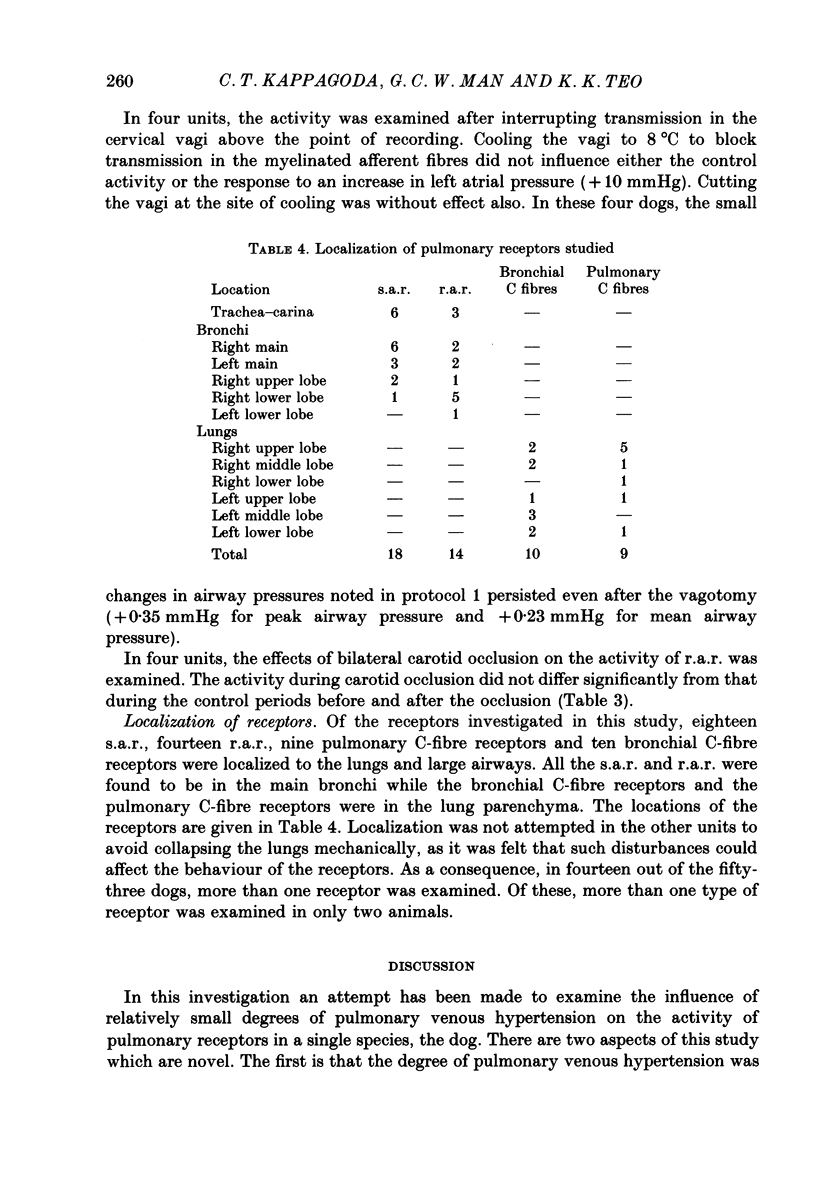
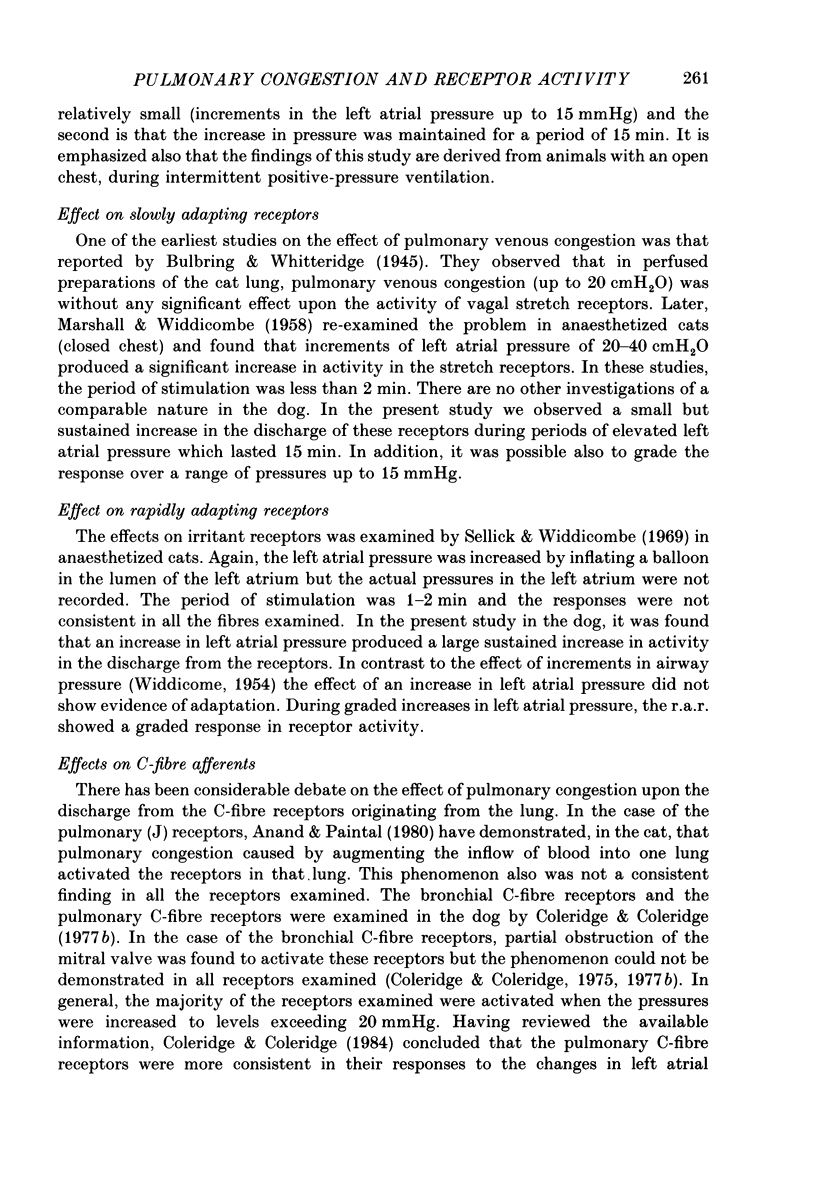
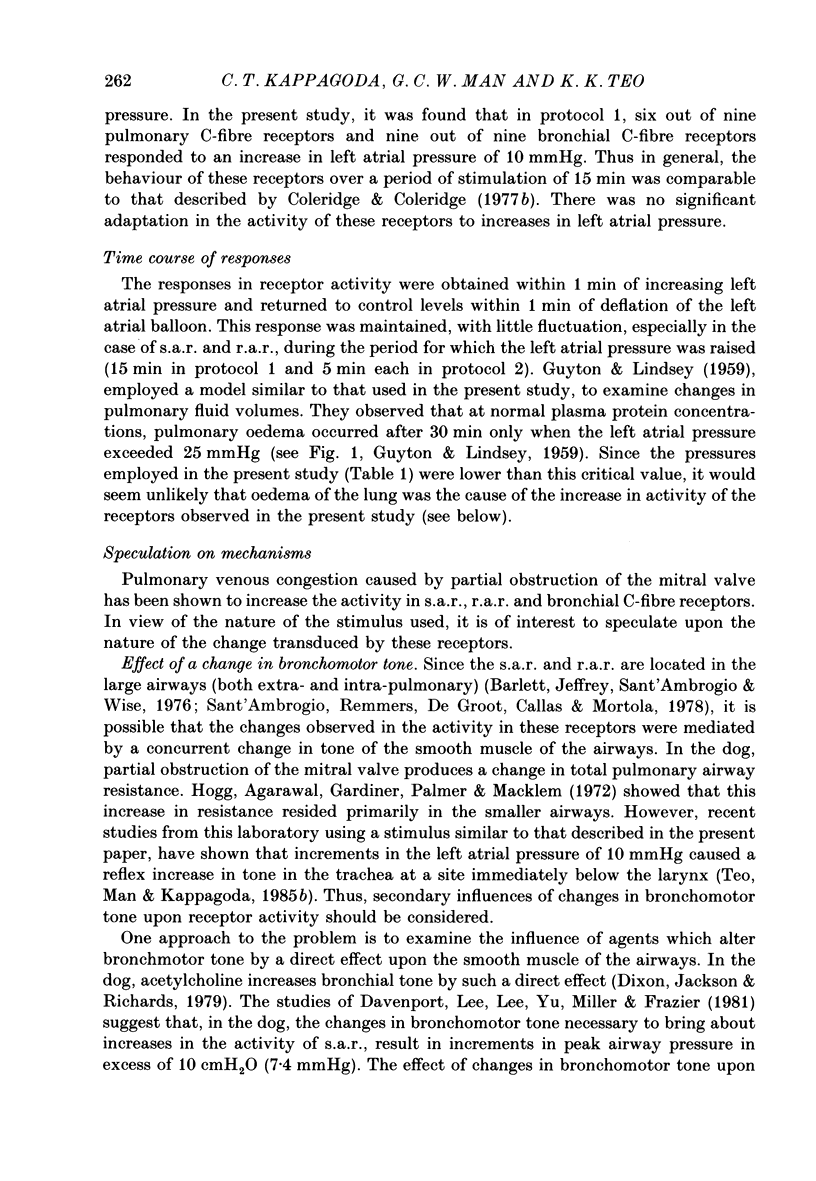
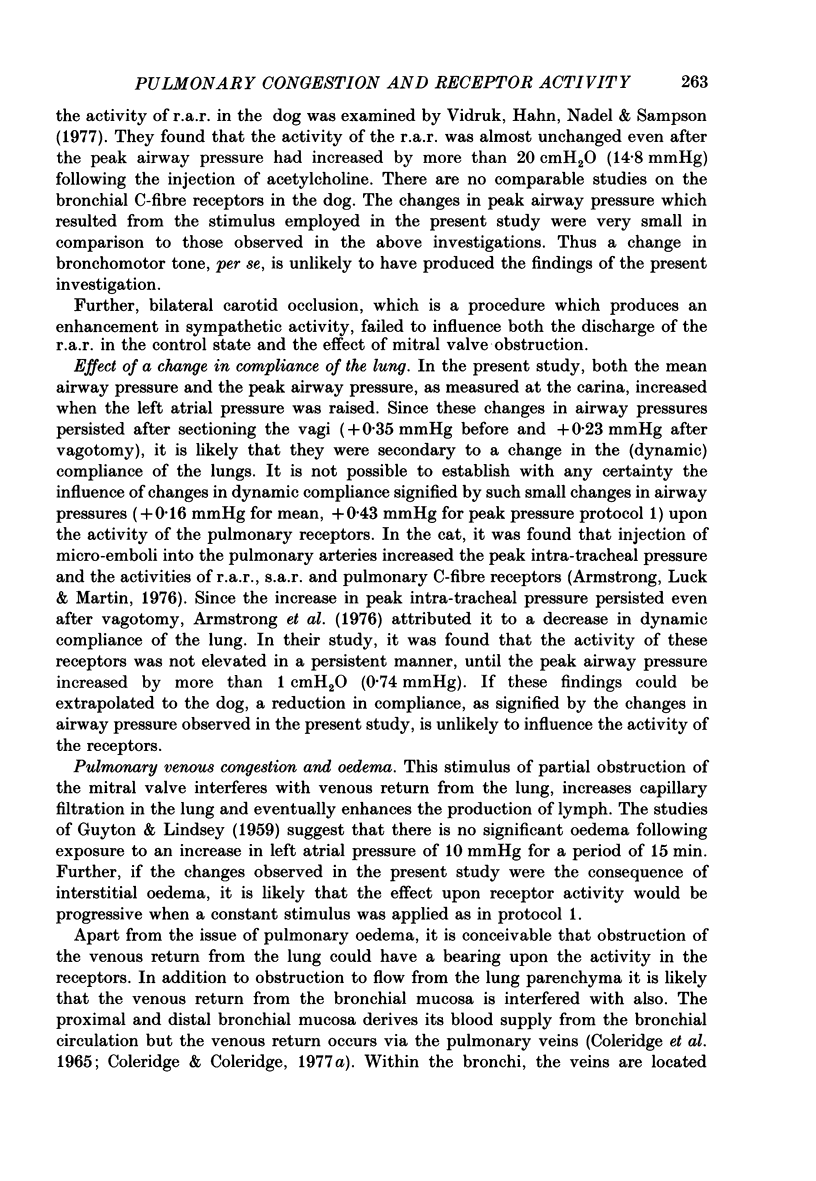
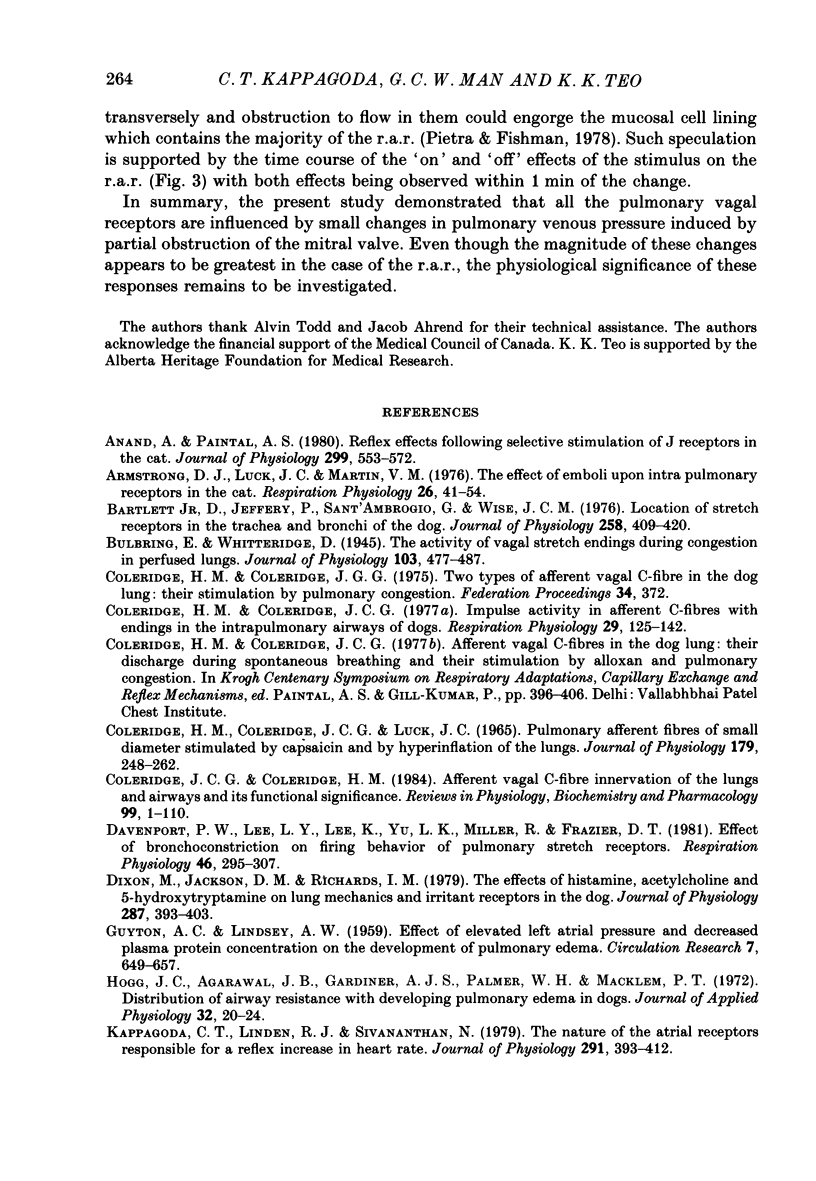
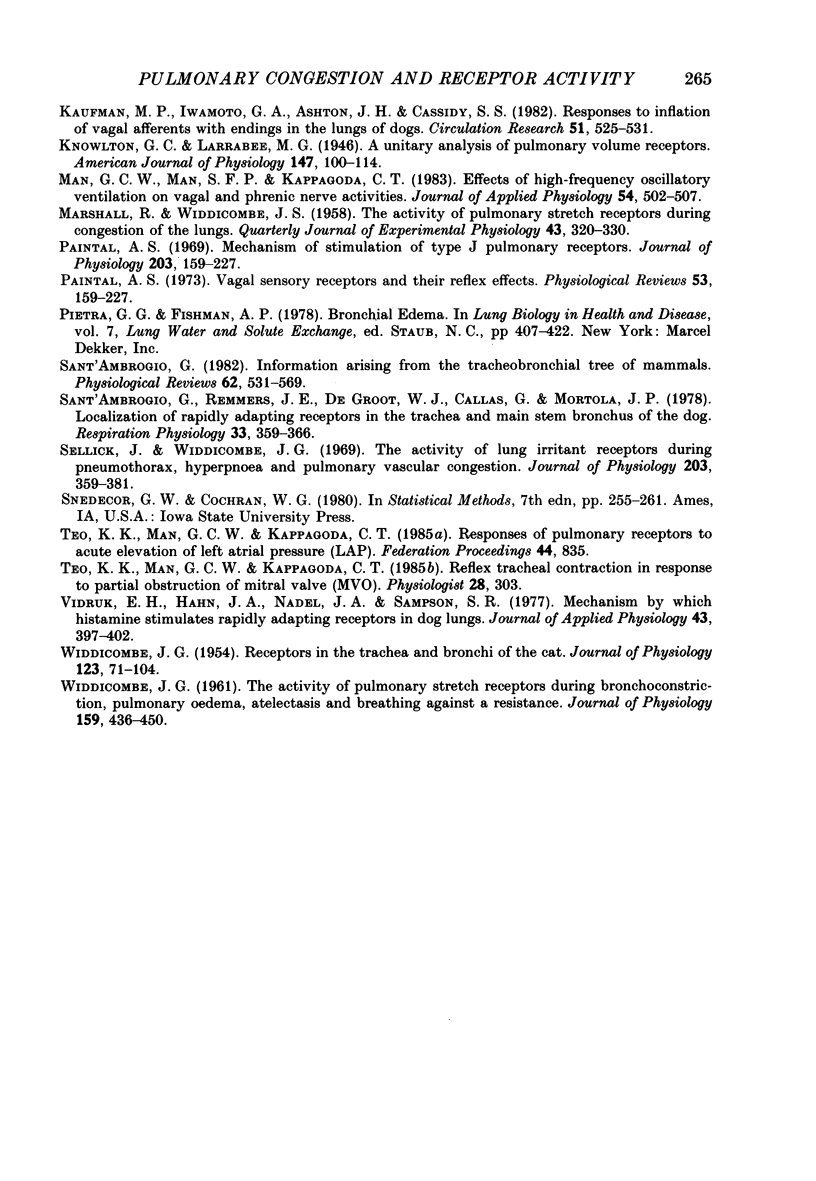
Selected References
These references are in PubMed. This may not be the complete list of references from this article.
- Anand A., Paintal A. S. Reflex effects following selective stimulation of J receptors in the cat. J Physiol. 1980 Feb;299:553–572. doi: 10.1113/jphysiol.1980.sp013142. [DOI] [PMC free article] [PubMed] [Google Scholar]
- Armstrong D. J., Luck J. C., Martin V. M. The effect of emboli upon intrapulmonary receptors in the cat. Respir Physiol. 1976 Feb;26(1):41–54. doi: 10.1016/0034-5687(76)90050-5. [DOI] [PubMed] [Google Scholar]
- Bartlett D., Jr, Jeffery P., Sant'ambrogio G., Wise J. C. Location of stretch receptors in the trachea and bronchi of the dog. J Physiol. 1976 Jun;258(2):409–420. doi: 10.1113/jphysiol.1976.sp011427. [DOI] [PMC free article] [PubMed] [Google Scholar]
- Bülbring E., Whitteridge D. The activity of vagal stretch endings during congestion in perfused lungs. J Physiol. 1945 Mar 28;103(4):477–487. doi: 10.1113/jphysiol.1945.sp004092. [DOI] [PMC free article] [PubMed] [Google Scholar]
- Coleridge H. M., Coleridge J. C. Impulse activity in afferent vagal C-fibres with endings in the intrapulmonary airways of dogs. Respir Physiol. 1977 Apr;29(2):125–142. doi: 10.1016/0034-5687(77)90086-x. [DOI] [PubMed] [Google Scholar]
- Coleridge H. M., Coleridge J. C., Luck J. C. Pulmonary afferent fibres of small diameter stimulated by capsaicin and by hyperinflation of the lungs. J Physiol. 1965 Jul;179(2):248–262. doi: 10.1113/jphysiol.1965.sp007660. [DOI] [PMC free article] [PubMed] [Google Scholar]
- Coleridge J. C., Coleridge H. M. Afferent vagal C fibre innervation of the lungs and airways and its functional significance. Rev Physiol Biochem Pharmacol. 1984;99:1–110. doi: 10.1007/BFb0027715. [DOI] [PubMed] [Google Scholar]
- Davenport P. W., Lee L. Y., Lee K., Yu L. K., Miller R., Frazier D. T. Effect of bronchoconstriction on the firing behavior of pulmonary stretch receptors. Respir Physiol. 1981 Dec;46(3):295–307. doi: 10.1016/0034-5687(81)90128-6. [DOI] [PubMed] [Google Scholar]
- Dixon M., Jackson D. M., Richards I. M. The effects of histamine, acetylcholine and 5-hydroxytryptamine on lung mechanics and irritant receptors in the dog. J Physiol. 1979 Feb;287:393–403. doi: 10.1113/jphysiol.1979.sp012666. [DOI] [PMC free article] [PubMed] [Google Scholar]
- GUYTON A. C., LINDSEY A. W. Effect of elevated left atrial pressure and decreased plasma protein concentration on the development of pulmonary edema. Circ Res. 1959 Jul;7(4):649–657. doi: 10.1161/01.res.7.4.649. [DOI] [PubMed] [Google Scholar]
- Hogg J. C., Agarawal J. B., Gardiner A. J., Palmer W. H., Macklem P. T. Distribution of airway resistance with developing pulmonary edema in dogs. J Appl Physiol. 1972 Jan;32(1):20–24. doi: 10.1152/jappl.1972.32.1.20. [DOI] [PubMed] [Google Scholar]
- Howe A., Thody A. J. The effect of hypothalamic lesions on the melanocyte-stimulating hormone content and histology of the pars intermedia of the rat pituitary gland. J Physiol. 1969 Jul;203(1):159–171. doi: 10.1113/jphysiol.1969.sp008857. [DOI] [PMC free article] [PubMed] [Google Scholar]
- Kappagoda C. T., Linden R. J., Sivananthan N. The nature of the atrial receptors responsible for a reflex increase in heart rate in the dog. J Physiol. 1979 Jun;291:393–412. doi: 10.1113/jphysiol.1979.sp012821. [DOI] [PMC free article] [PubMed] [Google Scholar]
- Kaufman M. P., Iwamoto G. A., Ashton J. H., Cassidy S. S. Responses to inflation of vagal afferents with endings in the lung of dogs. Circ Res. 1982 Oct;51(4):525–531. doi: 10.1161/01.res.51.4.525. [DOI] [PubMed] [Google Scholar]
- MARSHALL R., WIDDICOMBE J. G. The activity of pulmonary stretch receptors during congestion of the lungs. Q J Exp Physiol Cogn Med Sci. 1958 Jul;43(3):320–330. doi: 10.1113/expphysiol.1958.sp001336. [DOI] [PubMed] [Google Scholar]
- Man G. C., Man S. F., Kappagoda C. T. Effects of high-frequency oscillatory ventilation on vagal and phrenic nerve activities. J Appl Physiol Respir Environ Exerc Physiol. 1983 Feb;54(2):502–507. doi: 10.1152/jappl.1983.54.2.502. [DOI] [PubMed] [Google Scholar]
- Paintal A. S. Vagal sensory receptors and their reflex effects. Physiol Rev. 1973 Jan;53(1):159–227. doi: 10.1152/physrev.1973.53.1.159. [DOI] [PubMed] [Google Scholar]
- Sant'Ambrogio G. Information arising from the tracheobronchial tree of mammals. Physiol Rev. 1982 Apr;62(2):531–569. doi: 10.1152/physrev.1982.62.2.531. [DOI] [PubMed] [Google Scholar]
- Sant'Ambrogio G., Remmers J. E., de Groot W. J., Callas G., Mortola J. P. Localization of rapidly adapting receptors in the trachea and main stem bronchus of the dog. Respir Physiol. 1978 Jun;33(3):359–366. doi: 10.1016/0034-5687(78)90062-2. [DOI] [PubMed] [Google Scholar]
- Sellick H., Widdicombe J. G. The activity of lung irritant receptors during pneumothorax, hyperpnoea and pulmonary vascular congestion. J Physiol. 1969 Aug;203(2):359–381. doi: 10.1113/jphysiol.1969.sp008868. [DOI] [PMC free article] [PubMed] [Google Scholar]
- Vidruk E. H., Hahn H. L., Nadel J. A., Sampson S. R. Mechanisms by which histamine stimulates rapidly adapting receptors in dog lungs. J Appl Physiol Respir Environ Exerc Physiol. 1977 Sep;43(3):397–402. doi: 10.1152/jappl.1977.43.3.397. [DOI] [PubMed] [Google Scholar]
- WIDDICOMBE J. G. Receptors in the trachea and bronchi of the cat. J Physiol. 1954 Jan;123(1):71–104. doi: 10.1113/jphysiol.1954.sp005034. [DOI] [PMC free article] [PubMed] [Google Scholar]
- WIDDICOMBE J. G. The activity of pulmonary stretch receptors during bronchoconstriction, pulmonary oedema, atelectasis and breathing against a resistance. J Physiol. 1961 Dec;159:436–450. doi: 10.1113/jphysiol.1961.sp006819. [DOI] [PMC free article] [PubMed] [Google Scholar]


